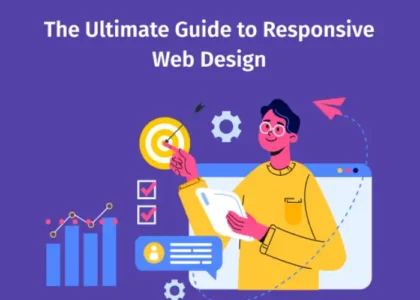Oh yes, Google is out with its latest update creating terror for SEO professionals as they scramble to come out of its impact. Don’t worry, it’s not that bad if you know how to cook up smart tactics to recover ready yet again with a large volume of organic traffic. Google’s spam update aims to punish spam websites, so the next time when your traffic goes down, chances are that you have violated the search engine’s spam policies.
You can indeed come out of this mess but as you know nothing comes easy. The spam updates of Google are complex and so are the solutions to get back traffic again. come Here are 15 killer tips to help you come out of the malpractices quickly. For now, we will tour what mistakes you must avoid and the shady practices you need to discard.
1. Link spamming
Is your SEO practice a victim of short-sighted link-building practices? You are sure to come across a significant drop in traffic and rankings. Whether you apply link-building tactics in black, grey, or white, be sure to avoid the appearance of spam. Google’s response to link spam varies, so going forward, check your link-building method as every risk you take will push you ahead in the danger zone. If you try to create fraud with backlinks, it may be judged as Link spam. Avoid these links if you are to stay in the good books of Google:
- Purchased Links
- Exchanged Links
- Automated Links
- Signature/Profile Links
- Footer Links
- Low-quality Directory/Bookmarking links
If you have already used these spam linking techniques, you cannot get back what you have already done. A good solution is using Google’s Disavow tool to recover. It’s easy to use and apply
2. Stuffing Keywords
You must be familiar that Google’s spam update is a definite negative ranking aspect. Repeated use of words and phrases causes websites to rank low in the search engine. As Google states officially “Filling pages with keywords or numbers results in a negative user experience, and can harm your site’s ranking” it’s high time you wake up to hear this alarm. Try to remove forcefully stuffed keywords in your web pages and Google will surely love crawling your site.
3. Avoid Cloaking
Cloaking is termed as a violation in the October scam update. It creates a masking effect where you show different content to the search bots and human visitors. Staying cloaked will not save you from this menace. Once Google recognizes cloaking, your website may be permanently moved from the search engine index.
4. No Doorway Pages
Initially termed as a black hat strategy, it may ruin your site’s ranking and visibility among the target audience. If you want to get rid of the shackles of doorway pages to improve your SEO, you must stop using the same content to target multiple keywords. Are you already into this kind of mess? Make sure that each content targeting multiple keywords is unique to avoid Google’s penalization.
5. Clear Hacked Content
Has your website content been hacked by shady people better known as hackers? They might change the content of your site and change the links that Google recognizes as spam. Just get rid of hacked content on the pages and keep it safe. Work on your site security right now.
6. Steer ahead of Hidden Content
This one is yet another black hat strategy according to Google’s spam update. And the worst thing about it is that it may or may not lead to desired results. Hiding your page content from human visitors but making them visible to the search bots is what the real meaning of hidden content is. These strategies are often the key hacks that web designers apply like using the same color in the background, placing your text out of the viewport, using images to hide texts, making the font size zero, or turning the text transparent with CSS. These strategies violate Google’s Webmaster Guidelines and may result in the elimination of the web page.
7. Scraping Google
Feeding automated search queries to the search engine and scraping its search results is against the search policies. Try to avoid using scripts leveraging your system or server to scrape Google. Even if you are using them, be sure to use VPN and avoid getting caught on the wrong foot.
8. Scraping other websites
Spinning and using content from other websites or using them as it is are things you need to avoid. If someone is copying content from your website, do not worry. You will eventually be kicked out of the realm.
9. Do Not Publish Artificial Content
Using automatic tools like Wordsmith, Article Forge, Articolo, and Will goes against Google’s guidelines. Remove the pages with artificially-written content and you are on the track.
10. Check Malware on the site
Google is cautious about websites with malware and displays warning messages when users visit pages with malicious codes. Hacking SEO with malicious codes may drop user visits significantly, do away with the visitor’s trust, and results in low engagement. Check and clean your website regularly to come out of this hassle.
11. Don’t misleadthe visitors
Suppose your website promises a specific service or function but it is not visible to visitors, Google will penalize the site based on its October spam update. So, don’t make promises for services or functions you cannot provide. Ensure that your site has the promised function and it works correctly to avoid misleading the users.
12. Keepthe Tricky redirects at bay
Redirecting visitors to any other category without displaying a warning message but redirecting the search bots correctly is another spam you need to avoid.
13. Do not rely on Languid Affiliate pages
Attributing affiliate activity without contributing to it is the dark side of affiliate marketing. Apart from this, the affiliate sites relying on the images and content provided by the manufacturer is another aspect of a lazy affiliate page. Add more value to your content received from the manufacturer to come out in the light and discard the dark elements.
14. No User generated spam
User-generated spam content not only disrupts the site but may not be associated with your site to search engines and Google. Checkthe content and add UGC links relatedto the content that the visitors on the website publish.
15. Avoid Real scam
Never copy the color scheme and logo of the reputed brands. Even if you do, try to establish a clarification along the way mentioning that your site does not represent those brands in any way.
Recovering from Google’s spam update is a more difficult feat than you can imagine. Work your way through this extensive guideline and leave your worries behind for the next series of algorithms. Observe your search engine rankings through weeks and months to view a significant improvement in the search engine rankings.





